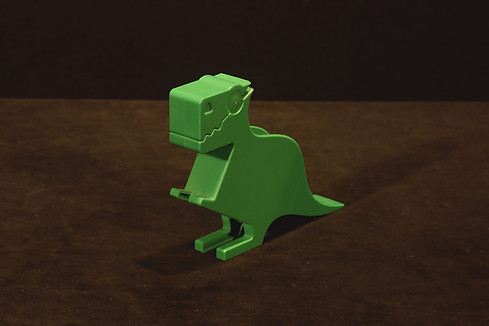
Sophia Vandycke
DINOSAUR

Photograph
3D Render


To get some experience with 3D Studio Max, we were tasked to take a picture picture of an object, recreate it in SolidWorks, and then recreate the scenery and lighting setting from the photograph in 3D Studio Max. The goal was to make the 3D render nearly indistinguishable from the photograph.
The model of the dinosaur required a lot of detail. The inner edges of the pieces have a small lip from manufacturing that was mimicked in the model.



SOLIDWORKS MODEL
When I took the picture of the object, it was on a black velvet table. This was hard to mimic in 3DsMax. Autodesk does have a black velvet, but the color was off and was not reacting to the lighting in the same way. To compensate, in the material set up, I set a brown background to the texture image and reduced the transparency of the image by 10%. This allowed enough of the brown to show through.
MATERIALS
To achieve the proper curvature of the object, I imported the image into solid works and scaled it to match the proper dimensions. I used the image in combination with measurement to ensure that all segments were the correct size.
For the Dinosaur, the body is a smooth green plastic material which is modified to more closely resemble the color of the object. The spring that doubles as a pupil is aluminum.
SCENERY SETUP

3Ds Max camera and lighting

Real world studio camera and lighting
3D STUDIO MAX
In 3Ds MAX I started planning the scenes with the distances and angles recorded from the physical picture. I quickly learned that that was just a good approximation but a lot more was needed.
The scene includes the 3 original cameras similar to the studio setup. I was unable to achieve the correct highlights while still maintaining the shadows and decided to focus on matching the shadows rather than the highlights.
To get the correct shadow shape and definition, I had to change the light shape from a rectangle to spherical. The spherical lighting gave me more control of the shadows.
The overhead light casts the front shadow and provides the lighting at the top of the head, the left light is responsible for the tail shadow, and he right light casts the full side shadow.
The exact color of the lights was hard to match but found the temperature of 3300K to be a close approximation.